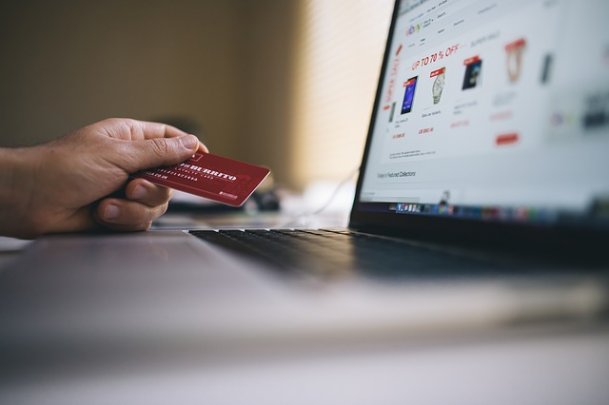How to Copyright eCommerce Website to Avoid Cyber Crime?

Have you ever received a letter of infringement or witnessed a desist case?
You would be lucky if you haven’t through this trauma. But, the future is uncertain. You never know when you can be litigated. It’s a common trend to witness the pervasiveness of the online business. So would be the copyright infringement. Therefore, you must be well-versed with what the copyright act is and how it helps your eCommerce website to fight the cybercrime.Â
Let’s define what this act is.
What is a copyright?
When an originator obtains a legal right exclusively to print, publish, perform, film, record literary, artistic or musical material for a number of years, he acquires the copyright. An originator is the one who creates that material on his/her own. That material would be genuine.Â
This law, indeed, provides a protection against the infringers/ cyber criminals who tend to intentionally steal your digital crafts. Such criminals actually derive some commercial motive out of a unique publishing. Thereby, you should put the record straight by pinning your digital crafts and materials with this protective law.  Â
So! What those materials are that need the protection from imitation-Can you guess? Let’s catch them in the next section.
Digital Products that Require Copyright:
eCommerce website is your asset just like a physical storefront. It’s a cash cow that lets you generate revenue.
How is it if someone copy and paste the image on your website? What if that person is your business rival? Would you ever allow others to take credit for your hard work? Â
Absolutely no, you can never allow him to take away your profit margin. This is why you should know which your most valuable digital assets are. Here is the list of the digital materials that you can copyright:
- eCommerce website design/source code/ technical description/ algorithms/ programs/flowchart/system/navigations
- Software
- Technical internet tool
- Search engine (if any)
- Creative content
- Photographs
- Written material
- Music
- Graphics
- Videos
- Infographics
- Database/CRM/CMS
- Domain name
- Logo/Favicon
- Company name
- Web pages
You can book a patent or copyright to exclude others from making, using, selling or inventing the licenced aforementioned materials of your digital store. You can trademark a favicon, logo or domain name as your company’s representative products.
Trademark Your IP, Domain Name:
IP stands for the internet protocol. It defines a set of guidelines that direct how to format the content/data over the internet & other network. Also, the IP address labels each device numerically so that it can communicate with the other one.
If you haven’t trademarked your IP, anyone can create a duplicate domain similar to your domain name. Consequently, your Google ranking would scroll down. Most likely, many valuable leads can slip out of your hand. Your replica domain name would catch the eyeballs of the hundreds of visitors. You won’t be able to do anything since he/she would have the trademarked IP address and the name of that website.
So, hurry up! File for the patent or the trademark of the digital crafts that you have on your website. This is how you can be more proactive and stronger with patented website. Â
Create Confidentiality in Your Working Space:
- Sign a deal with employees: Surveillance of your website is a priority. You should make sure that your host, contractor, internet services provider and the entire staff would have inked the deed of confidentiality. State the non-disclosure confidentiality clause to them. Clarify the severe consequences they can be slapped with if the copyright deed is violated. Â Â
- Display the copyright policy: To get off any kind of infringement under ignorance, you must integrate the copyright policy with your website. Each copyrighted material should be separately named. Also, mention the monitory or physical penalty subtly. Otherwise, many online visitors have a mindset that each online material is free to use.
- Post the impression of copyrighted items: Have you witnessed the watermark on the images of shutterstock? Its owner Jon Oringer has wisely showcased the impression of the copyrighted images. Likewise, you should create your brand’s own logo and favicon. Trademark them. Lastly, inclusively name them in the copyright or trademark policy.Â
These arrangements would kick the ball into your court. Then, you would have better chances to make your stand stronger.
Timestamp Your Digital Content:
Originally, the timestamp refers to a digital record. It tells the time of occurrence of a particular online event. For example, copy the message from the skype. When you paste it anywhere, the message would show the embedded timestamp.
You can unify the same feature to your source code. Thereby, none would be able to create a replica of your online content/material. And if someone attempts to do so, you would have the evidence that the digital content originally belongs to you. Â
Steps to Control Access to Your Content:
- Allow access to those who abide by the copyright policy:
Many websites don’t allow access to their material. You need to register with them. Sometimes, it’s for free or paid. This registration confirms that you’re eligible to catch its glimpse. This is how it restricts the access to everyone.
- Encrypt downloads: Encryption denotes altering the readability of the content. This is the best way to avoid the copyright infringement cases. You can embed this feature on every download from your website. And if someone does so, the downloaded content would be an encrypted file. It can’t be decoded unless a public or private key is used to decrypt it. This key would be the best option to safeguard your copyrighted material.